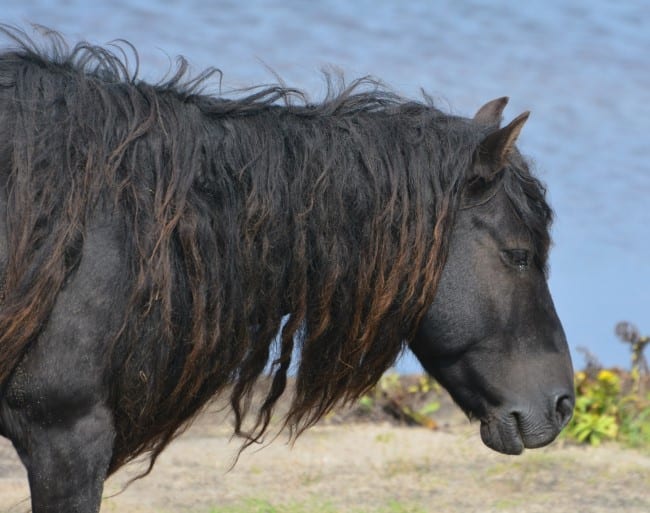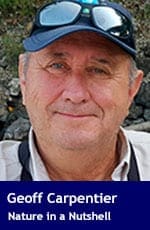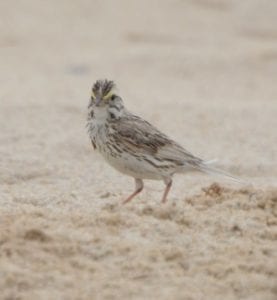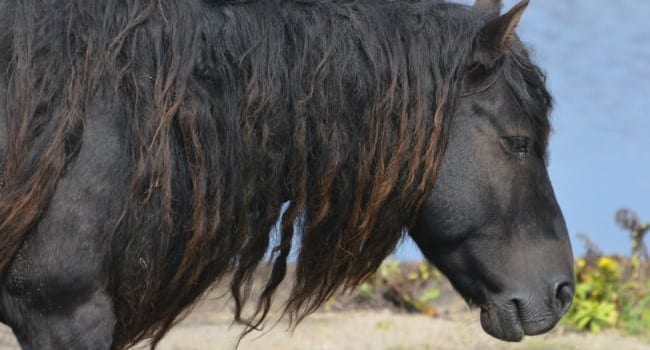
One of the many wild horses roaming free on Sable Island photo: Geoff Carpentier
 As a guide, I often get to travel to exciting destinations. For example, I recently participated in an adventure to the Canadian Maritime provinces that took me to Sable Island.
As a guide, I often get to travel to exciting destinations. For example, I recently participated in an adventure to the Canadian Maritime provinces that took me to Sable Island.
I’ve felt the urge, almost the need, to visit this magical place for most of my adult life. I’m not sure really why since it’s only a narrow strip of land stuck well out in the Atlantic Ocean.
I knew a lot about it from my reading but really wasn’t prepared for how I would feel when I finally got there.
Sable Island is administratively part of Nova Scotia, but is separated by a vast expanse of ocean. It’s a protected National Park Preserve overseen by Parks Canada staff.
| RELATED CONTENT |
| Surefire ways to find out if you’re a naturalist By Geoff Carpentier |
| What the heck are jumping worms? By Geoff Carpentier |
| Monarch butterflies here today, gone tomorrow By Geoff Carpentier |
Likely first discovered in the early 1500s, many explorers have visited Sable Island and many have perished since it’s a dangerous obstacle to sailing vessels, appearing as if out of nowhere in the north Atlantic. Over 350 shipwrecks have been documented off its remote shores.
A brief attempt at French colonization at the end of the 16th century failed, but the island was inhabited sporadically by sealers, shipwreck survivors and salvagers thereafter. A rescue station was established there in the 1800s to help survivors of shipwrecks while they awaited rescue.
Sable Island is a narrow, crescent-shaped sandbar with a surface area of about 34 square km and measures 42 km in length, with an average width of less than one kilometre. It’s frequently buffeted by intense storms and extreme fog. There are several freshwater ponds on the south side of the island that attract shorebirds and some waterfowl. A former lake (Lake Wallace) has filled in due to shifting sands. Marram grass dominates the landscape and only one tree survives on the island!
Harbour and gray seals breed on the island in the thousands. Sadly, a walrus colony was extirpated by hunters. One of the island’s other claims to fame is being the only place in the world where the Ipswich form of the Savannah sparrow breeds.

This Ipswich Sparrow was spotted on Sable Island photo: Geoff Carpentier
But the real draw is the fact that over 550 free-roaming horses live there! Their origin is unclear but it’s speculated they came from stock left behind during the Great Expulsion of the Acadians from the Maritime provinces (1755 to 1764).
As we approached the island, our anticipation rose and ebbed as we watched the weather forecasts. We weren’t sure if, after travelling almost 160 km into the Atlantic, we could even land. We had Parks Canada staff aboard who had work to do on shore.
Due to the skill of the Zodiac pilots, we were able to get ashore, although it was a bit scary as the waves crashed against the sandy beach.
We scurried up to the high water line like so many crabs and donned our hiking gear as we anticipated this rare opportunity to explore this incredible sanctuary.
Before we had even left the beach, one of the horses, a gorgeous mare, wandered down off the dunes and nonchalantly fed on the marram grass. We watched in awe as she went about her business. Eventually she disappeared over the dunes and we finally started out.
Soon we saw several more horses in small herds, each indifferent to us and none realizing the impact they had on us and would have for years to come.
And, yes, we did see the Ipswich sparrow. But I admit that although it was scientifically significant, it was underwhelming in its physical impact – a small brown drab sparrow.
But now I’ve seen one and, more importantly, I’ve walked the shores of Sable Island with the wild horses!
Geoff Carpentier is a published author, expedition guide and environmental consultant. Visit Geoff online at www.avocetnatureservices.com, on LinkedIn and on Facebook.
The views, opinions and positions expressed by columnists and contributors are the author’s alone. They do not inherently or expressly reflect the views, opinions and/or positions of our publication.

